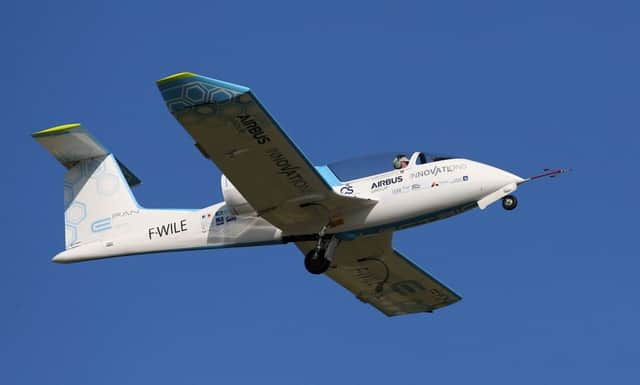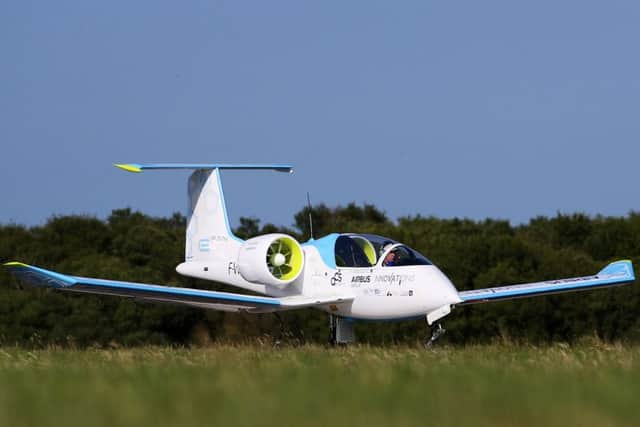Bid to fly electric plane across English Channel


More than 100 years since French aviation pioneer Louis Bleriot became the first person to fly across the Channel in a plane, Didier Esteyne will aim to make history of a different kind - in a battery-powered aircraft.
The flight in Airbus Group’s E-Fan 1.0 plane will be in the reverse direction of Bleriot’s landmark Channel crossing 106 years ago on July 25, 1909.
Advertisement
Hide AdAdvertisement
Hide AdThis morning, the twin-engine plane - whose batteries enable it to stay airborne for up to 50 minutes - will fly from Lydd Airport in Kent to Calais in around 40 minutes.


Final checks and preparations were carried out last night by its pilot and designer Esteyne, including a 20-minute test flight around Lydd Airport shadowed by a helicopter.
He said: “Like so many others in aviation history, Louis Bleriot has been a hero and inspiration to me and it gives me great pride that I am able to honour his legacy with the first ever electric-powered Channel crossing.”
The two-seat E-Fan has a 31ft wing-span, is two metres in height, with a total engine power of 60 kiloWatt and it operates on a 120-cell lithium polymer battery system.
With no fuel burden, the plane, which made its maiden flight in March last year, can be landed, its batteries unplugged and fly again after having a spare set fitted.
Describing the experience of flying the aircraft, Esteyne said: “It is closer to a glider because there is less noise than an aeroplane. Also, there is no vibration at all. It’s smooth and very quiet.”
The E-Fan 1.0 has undergone 100 flights, and this project has taken 18 months from paper to its first flight, said Simon Bradley, head of global innovation network at Airbus Group.
He said: “This is a really exciting project for us. It’s the first time that an all-electric aircraft will have flown across the English Channel and mirrors the flight by Bleriot in 1909.
Advertisement
Hide AdAdvertisement
Hide Ad“We take a lot of inspiration from Bleriot. In fact, Bleriot made up one of the first ever companies that has since become part of the Airbus Group.
“All of the people involved in this project are fantastically passionate and I hope that in 20 years’ time this day will have a marker in our timeline.”
Mr Bradley predicts large aircraft powered by electric are decades, rather than single-digit years, away from being introduced widely in the industry.
“I can say that we are probably building a part of aviation but not all of it,” said Esteyne. “We are not able to say now what will happen in five, eight or 10 years but for sure it is an interesting development.”
Jean Botti, Airbus Group’s chief technical officer, said: “The E-Fan project, and flights like the Channel crossing, show that the pioneering spirit and ingenuity demonstrated by Louis Bleriot and the other early aviators is still alive today.”
Mr Botti added: “For months we have been in contact with authorities and flight regulations and have performed an in-depth analysis of the flight profile.
“We have followed all requirements for safety verification in close co-operation with the French Direction Generale de l’Aviation Civile (DGAC).
“That is something which may not have been necessary 100 years ago, when aviation pioneer Louis Bleriot performed his Channel crossing.
“Back then, his flight was just a race to be first. Today, following rules and obtaining certifications is of crucial importance for the future of safe, reliable and certifiable electric flight.”